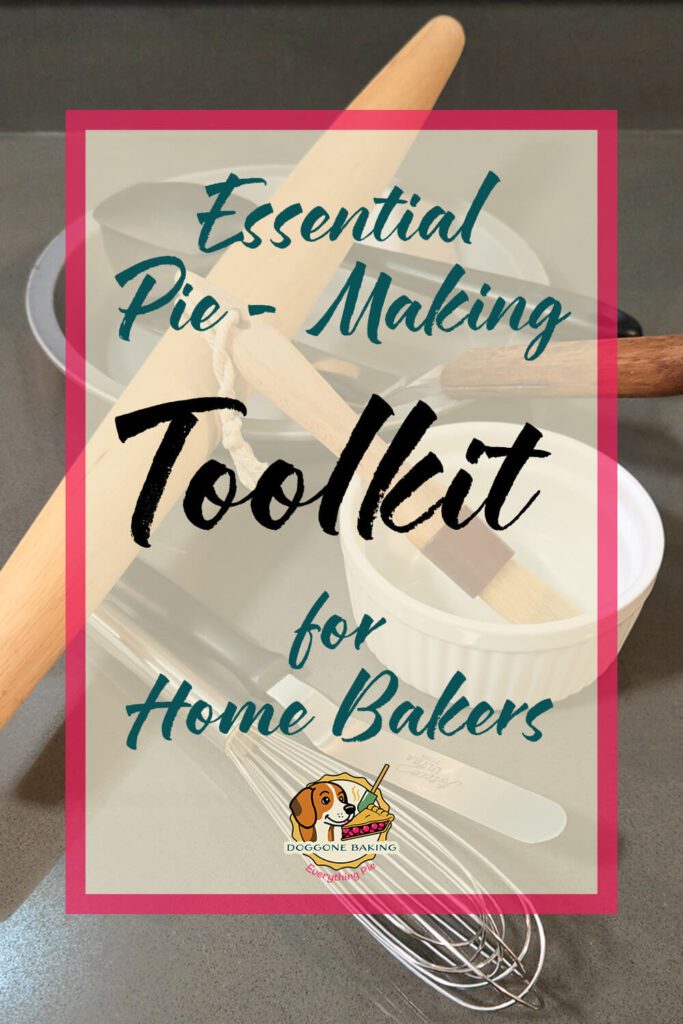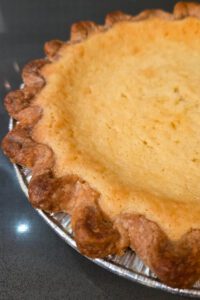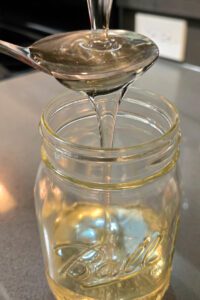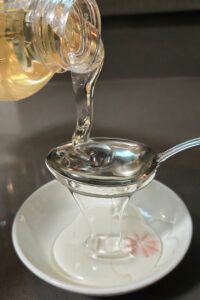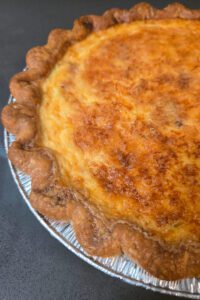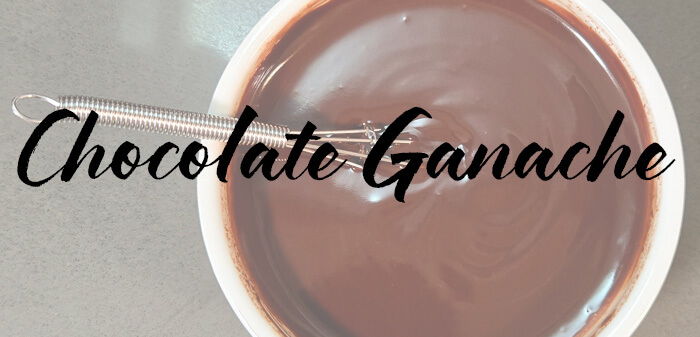
How to Make the Perfect Chocolate Ganache
Chocolate ganache is a baking staple that is both easy to master and looks professional. It’s made from just two ingredients, chocolate and cream, but delivers stunning results. Knowing how to make chocolate ganache is extremely useful and a well-made ganache adds a rich, glossy finish that instantly makes any dessert look more polished and professional. Even though it comes together in minutes, chocolate ganache has the power to transform a homemade pie into something that looks bakery-worthy.
Part of what makes chocolate ganache so popular is its versatility. By adjusting the ratio of chocolate to cream, you can create everything from a pourable fudge sauce, to a glossy chocolate glaze, to a firm, pipeable filling. Bakers often use it to add decorative touches, such as a Halloween spiderweb design on peanut butter pie, or to pipe elegant borders and swirls for a more intricate finish on icebox pies. Warm ganache can also double as an indulgent topping for a simple slice of pie à la mode with hot fudge sauce.
Table of Contents
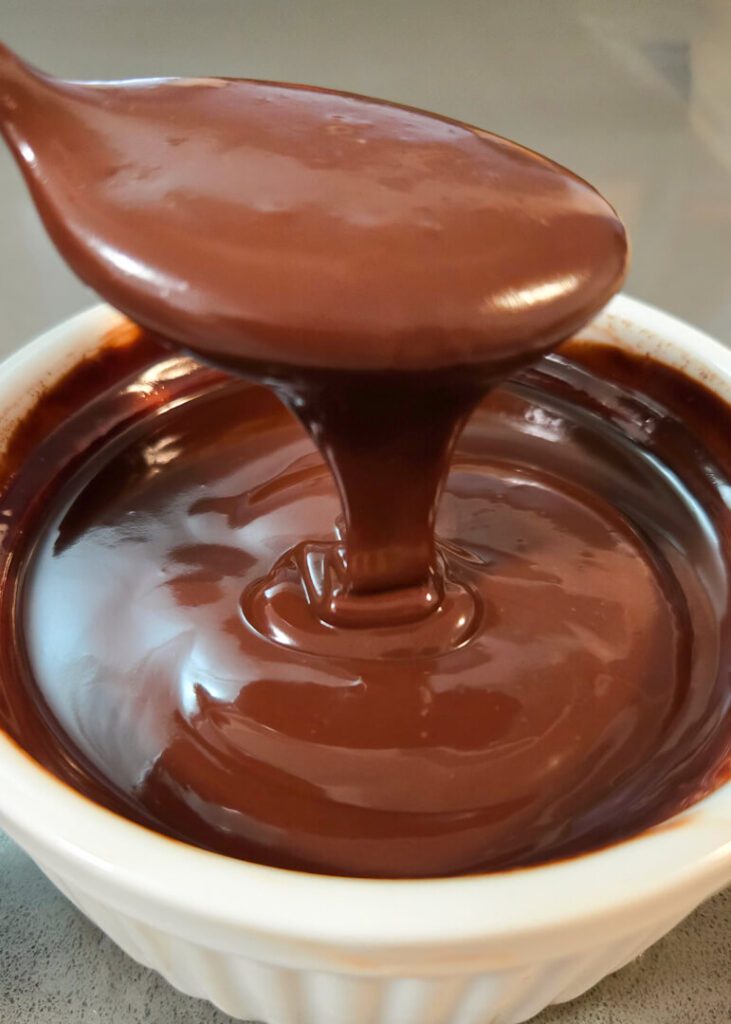
What is Chocolate Ganache:
Chocolate ganache has its roots in classic French pastry. The word ganache is sometimes said to come from a 19th-century kitchen mishap, when an apprentice accidentally poured hot cream over chopped chocolate and was called a “ganache” by the pastry chef. Ganache translates to “fool” or “imbecile” in French. Supposedly, the resulting mixture was unexpectedly smooth and delicious, and supposedly earned the nickname “ganache.” Like many food origin stories, this tale may be more legend than fact, but regardless of its true origins, chocolate ganache has become a cornerstone of pastry making around the world.
Chocolate ganache is a very simple product: hot cream emulsified with chopped chocolate in various ratios to produce various textures. Different chocolates produce different flavors and colors, while the ratio of cream to chocolate changes the final texture. A ganache with more cream can be used as a glossy glaze or pourable fudge sauce. Increasing the chocolate can produce a thicker, pipeable ganache that can be used like frosting. This thicker ganache can even be whipped once it’s cooled for a lighter texture that’s still pipable.
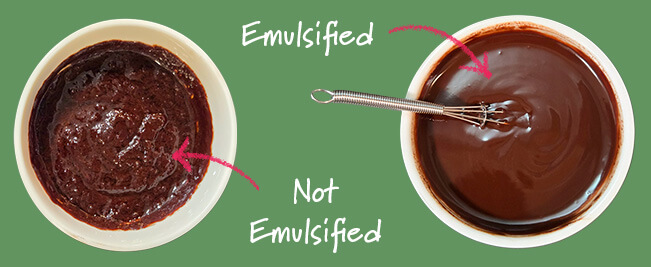
What is Emulsification?
Emulsification is the key scientific process behind chocolate ganache and is the process of combining two liquids that normally don’t mix, most often oil and water, into a smooth, stable mixture. In food science terms, it’s “the process of mixing two immiscible phases with the aid of a surface-active agent into a homogeneous emulsion.” In everyday language, it’s simply making opposites play nicely together. Some emulsions occur naturally, like milk, which is why cream and butter can be used in emulsions without needing anything extra. But many emulsions need a stabilizer, known as an emulsifier, to hold everything together. A common emulsifier in cooking and baking is egg yolks, which help emulsify mayonnaise, hollandaise sauce, and even ice cream.
When cooks and bakers talk about a batter or a sauce that has “broken,” they’re usually talking about an emulsion that has separated. For example, in a cheese sauce, you may see the oil pooling around rubbery curds. Or in a cake batter, you may see a grainy, slightly lumpy texture. Overheating is one of the most common reasons emulsions break.
Chocolate ganache is an emulsion of cocoa butter and milk fats blended with water and sugar. When emulsified correctly, the result is a silky, glossy ganache. When it breaks, you can end up with grainy, oily chocolate instead of a smooth topping. Luckily, it’s usually easy to rescue a broken ganache by whisking in a small amount of cold cream to cool the mixture down and bring everything back together.
How to Choose Chocolate for Ganache: Cacao Percentage and Flavor
Cacao Percentage:
When you shop for chocolate, you’ll often see labels like 55%, 68%, or 72% cacao, though it’s possible to find options anywhere from about 30% all the way up to 100%. This percentage refers to the proportion of the chocolate, by weight, that comes directly from the cacao bean. The rest is usually made up of other ingredients like sugar (necessary except in unsweetened chocolate), and sometimes milk powder, lecithins, or flavoring like vanilla.
Cacao percentage directly affects the texture of chocolate ganache. Higher percentages produce a firmer, denser ganache, while lower percentages create a softer, creamier one. That means you’ll need to adjust the amount of cream you use based on the chocolate you use. For example, the same ratio of chocolate to cream might yield a pourable sauce with a 35% cacao chocolate but a thick, pipeable ganache with an 85% bar.
Types of Chocolate:
The different words we hear associated with chocolate also fall within a range of industry standards. These include things like milk chocolate, white chocolate, semisweet chocolate, bittersweet chocolate, and unsweetened chocolate.
- White Chocolate: Contains no cocoa solids, at least 20% cocoa butter, and at least 14% milk. It’s very sweet, melts quickly, and has little true “chocolate” flavor but is very useful for decorating baked goods with color.
- Milk Chocolate: Contains at least 10% cacao and around 12% milk. Higher-quality milk chocolates often fall in the 30–40% cacao range. They’re sweet, less bitter, and melt at lower temperatures due to higher milk and sugar content.
- Semi-Sweet Chocolate: Usually 35–60% cacao, with higher-quality options closer to 50–60%. This is a versatile, balanced chocolate and works well as an all-purpose choice for baking applications.
- Bittersweet Chocolate: Often what we think of when we think of “dark chocolate.” Tends to be 65-80% cacao. 68-72% is a typical range, with percentages closer to 80% often being labeled as “extra dark.” A deeper chocolate flavor, but more bitter.
- Unsweetened Chocolate: 100% cacao with no added sugar. Extremely bitter and not suitable for snacking, and generally not recommended for making ganache.
- Dark Chocolate: Not formally defined by the FDA, but commonly refers to any chocolate with more than 45% cacao.
Practical Takeaways:
When making chocolate ganache, consider the cacao percentage and type of chocolate in terms of flavor, color, and the amount of cream you’ll need. Lower percentages make a lighter-colored ganache and require less cream, while higher percentages produce darker, firmer results that need more cream to balance.
Using Chocolate Chips vs Chopped Chocolate Bars in Ganache:
Chocolate chips are designed to hold their shape during baking and often include stabilizers like soy lecithin. Chocolate bars, by contrast, don’t always contain stabilizers and usually have a higher cocoa butter content. Chocolate ribbons fall somewhere in between and also tend to include stabilizers. For the smoothest, most consistent chocolate ganache, chopped chocolate bars are often best, though high-quality chips and ribbons can also make excellent results.
Coloring Chocolate Ganache:
If you’re using white chocolate ganache, it’s easy to customize with food coloring. Just stir in a drop or two of gel coloring to create anything from pastel shades to bold, vibrant hues.
Best Brands for Chocolate Ganache:
Choosing the right chocolate makes a big difference in the flavor, texture, and overall quality of your chocolate ganache. Below are some recommended brands that are widely available in California and across the US.
High-Quality Chocolate Brands (Premium, but Pricier):
These brands are considered some of the best for professional-quality chocolate ganache.
- Valrhona: Founded in 1922 in Ardèche, France, Valrhona is known worldwide for its consistency and depth of flavor. It’s one of the most respected names in pastry kitchens.
- Callebaut: A Belgian chocolate company established in 1911, Callebaut is a go-to brand for pastry chefs. It offers a wide range of couverture chocolates with balanced flavors and smooth texture.
- Guittard: Based in the San Francisco Bay Area, Guittard has been crafting chocolate since 1868. They offer both professional and home-baking lines, with excellent options for chocolate ganache.
- Tcho: A newer company founded in 2007 in Berkeley, California, by a former NASA engineer and the creators of Wired Magazine. Despite its youth, Tcho has earned awards for innovative, high-quality chocolate.
Middle-Grade Brands:
These brands are more affordable and easy to find in grocery stores nationwide, while still producing a smooth, flavorful chocolate ganache.
- Ghiradelli: Founded in 1852 in San Francisco by Italian confectioner Domingo Ghirardelli, this brand offers reliable mid-range chocolate with a wide product line. It’s slightly more affordable than premium brands but still delivers great flavor.
- Baker’s Chocolate Bars: Owned by Kraft-Heinz, Baker’s chocolate bars are a staple in many home kitchens. They’re consistent, easy to work with, and widely available.
Most Affordable Brands:
You don’t need premium chocolate to make a delicious ganache. Nestlé Toll House chocolate chips and many grocery store brands work well for everyday baking. While they may contain more stabilizers and sometimes lower cacao percentage than higher-end chocolate, they still produce a tasty ganache that’s perfect for decorating pies and other desserts.
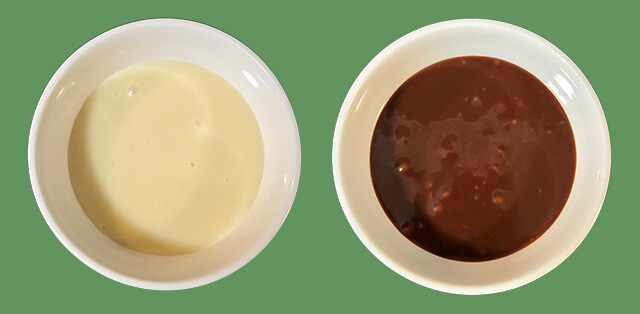
Recipes for Different Kinds of Chocolate Ganache:
As covered earlier, cacao percentage, chocolate type, and the texture you want all determine the ratio of chocolate to cream when making chocolate ganache. Use the guide below as a starting point for achieving the right consistency. The ratios are written as chocolate : cream (by weight).

These ratios aren’t set in stone, but they provide reliable baselines. Depending on the specific brand of chocolate you use, you may need to adjust slightly for sweetness, firmness, or how easily the ganache spreads or pipes.
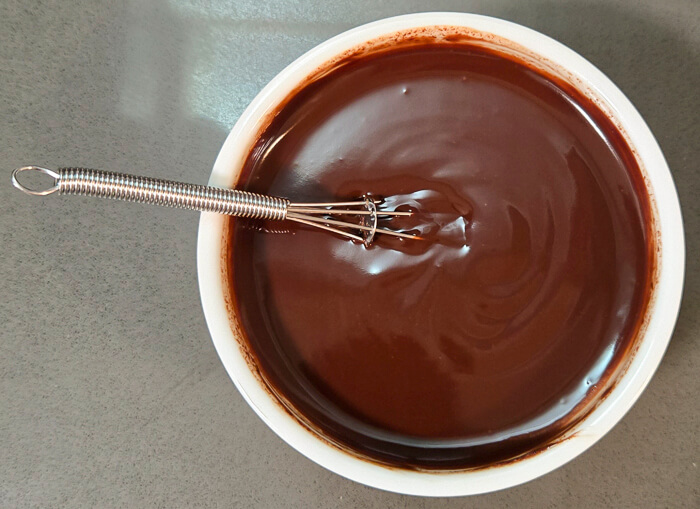
How to Make the Perfect Chocolate Ganache:
Making chocolate ganache is straightforward once you know what type of chocolate and ratio you need. Any recipe on this site that explicitly calls for ganache, such as my peanut butter pie recipe, will specify the ratio to use, but a good starting point for covering a pie is about 8 ounces of chopped chocolate. You can always adjust depending on whether you want a thin glaze, a thick layer, or piped decorations.
1.
Chop your chocolate into small, even pieces and place them in a heatproof mixing bowl. If you’re using chocolate chips or melting wafers, you can skip the chopping step since they’re already sized to melt easily.
2.
In a small saucepan, warm heavy whipping cream until it just reaches a simmer. Avoid letting it come to a full boil, since cream that’s too hot can cause the ganache to break or become grainy.
3.
Slowly pour the hot cream over the chopped chocolate while gently whisking. Continuous whisking helps the chocolate melt evenly and encourages the emulsion to form. Within a minute or two, you should have a smooth, glossy chocolate ganache ready to use.
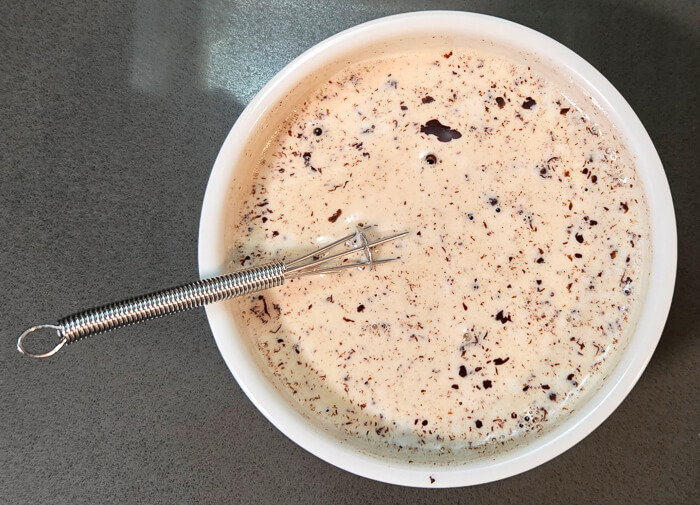

Chocolate Ganache vs Tempered Chocolate
Tempered chocolate and chocolate ganache are sometimes confused, but they serve different purposes in baking and pastry. Tempered chocolate is pure chocolate that has been carefully heated and cooled to stabilize the cocoa butter crystals. This process gives the final chocolate a glossy finish, a smooth texture, and that signature “snap” when you break a piece. It’s the technique chocolatiers use to make chocolate bars, chocolate coatings, and decorations that need to stay firm at room temperature.
Chocolate ganache, on the other hand, always includes cream. Because of this added fat and liquid, ganache will never set into a hard, snappy chocolate. Instead, it stays soft and fudgy, ranging from pourable sauces to pipeable fillings depending on the ratio of chocolate to cream.
Troubleshooting Chocolate Ganache:
Rescuing a Broken Ganache: Ganache can “break” if the cream is added when it’s too hot, causing the emulsion to separate. The result is a grainy or oily texture. To fix it, whisk in 1–2 tablespoons of cold cream. This lowers the temperature and helps bring the mixture back together into a smooth, glossy ganache.
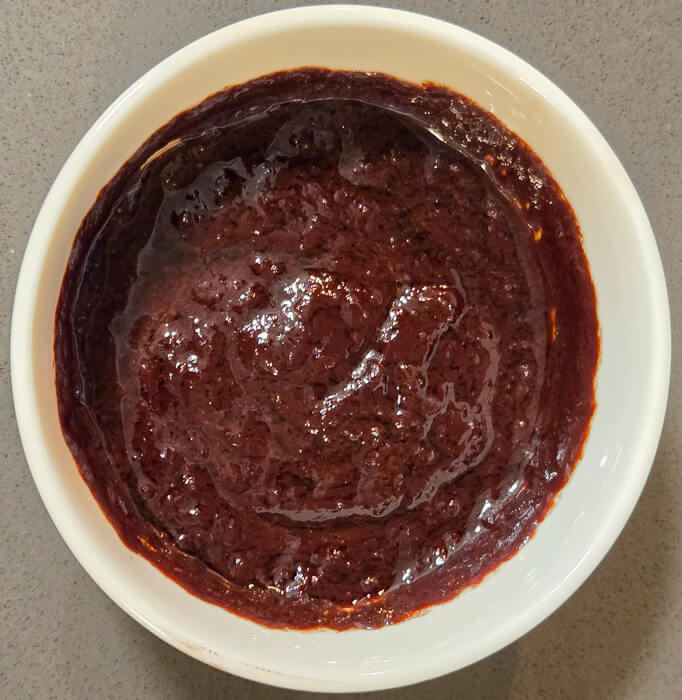
Thinning a Ganache: If you find your ganache is too thick for your desired application, slowly heat it in a heatproof bowl on a double boiler until it softens. Once soft, whisk in additional cream until it reaches your desired consistency.
Thickening a Ganache: If you find your ganache is too thin for your desired application, slowly melt additional chocolate in a heatproof bowl on a double boiler until it softens. If the ganache you’re adjusting is cold, soften it the same way. Once the chocolate has melted, whisk it into the ganache to incorporate it.

How to Store Chocolate Ganache:
The shelf life of chocolate ganache depends largely on the ratio of chocolate to cream and the freshness of the cream you used. If the cream was close to its expiration date, the ganache will spoil more quickly than if you started with fresh cream.
For a 1:1 ratio of chocolate to cream, or any ganache with more chocolate than cream, storage is more flexible. It can be kept safely at room temperature for up to 2 days, or refrigerated for about 1 week. Ganache recipes with more cream than chocolate are less stable and should always be stored in the refrigerator.
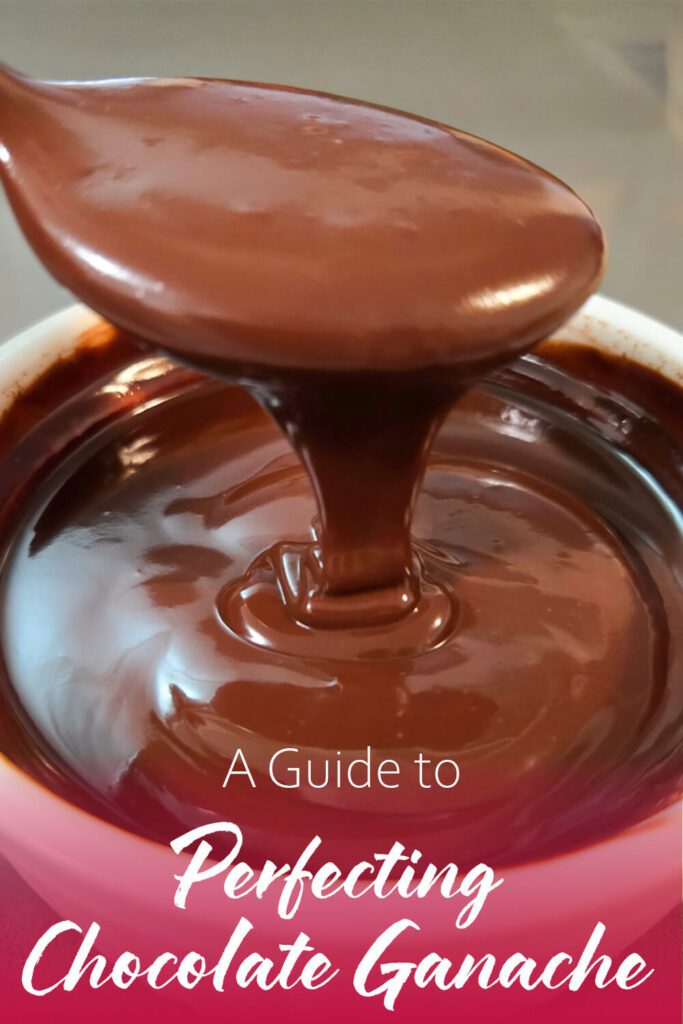
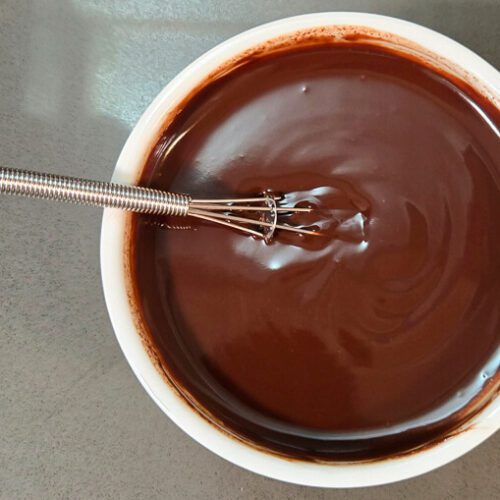
Dark Chocolate Ganache
Ingredients
- 8 oz Bittersweet Chocolate, chopped
- 1 cup Heavy Whipping Cream
Instructions
- In a pot on medium heat, heat the cream to just below a boil.
- Pour the hot cream into the chopped chocolate, and whisk until fully combined.






